You’d like to think that you’re a completely rational person making completely rational decisions, right? It’s nice to believe that you haven’t made major life decisions based on how you were feeling.
Well, you have. Many times.
Table of contents
What is emotional persuasion?
Emotional persuasion is the act of sparking emotions in your customers in order to affect the decision-making process.
Consider the irrational power of “free.” In an experiment, people preferred a free $10 Amazon gift card over buying a $20 gift card for $7. Also, when Amazon (French) removed their (negligible) shipping fee of $0.20, sales skyrocketed.
Is it rational to accept $10 for free instead of $13 for free? No. Is it rational to let a $0.20 shipping fee deter you from buying online? No.
Even the most analytical thinkers are predictably irrational; the really smart ones acknowledge and address their irrationalities.
Dan Ariely
So, what does that mean for marketers? And how can you use emotions to persuade visitors to convert faster and more frequently?
Why (and how) emotional persuasion works
If you’re doing conversion optimization, you should already be familiar with Cialdini’s six principles of persuasion. But how can emotion play a part in persuasion?
Antonio Damasio, a neuroscientist, conducted a famous study that demonstrated the impact emotions have on decision-making. He studied people who had brain damage that prevented them from feeling emotions.
They all behaved in a normal way, except for one thing: They were unable to make decisions. The subjects could describe what they should be doing, logically speaking. Yet they all found it difficult to make even the simplest decisions (e.g., what to eat, what to wear).
There’s also a psychological theory called dual processing. Essentially, the theory states that within your brain has two systems: system one and system two. System one is automatic, unconscious, low effort, and fast. System two is controlled, conscious, high effort and slow.
System one is our emotional processor; system two is our rational, logical processor.
Since system one is always on, you’re more likely to make an emotional decision and rationalize it later. In the words of Bart Schutz, “Our brain is not rational; our brain is rationalizing.”
When you make a decision based on emotion with system one, system two kicks in and rationalizes it.
Let’s take some famous brand rivalries, for example:
- Coke or Pepsi?
- Playstation or Xbox?
- Apple or PC?
- iPhone or Android?
- Dunkin’ Donuts or Starbucks?
- McDonald’s or Burger King?
- Walmart or Target?
For each of the pairs, you likely had an instinctive preference. That preference isn’t rational, it’s emotional.
System one decides to like Playstation, and system two rationalizes the decision (e.g., Playstation has better games, you can play online for free, etc.). So, while you think you’ve rationally decided that Playstation is better, you haven’t. You’ve emotionally decided that Playstation is better.
Even seemingly rational decisions are influenced by emotion. As a result, you simply aren’t as in control of your emotions and decisions as you think you are. None of us are!
So, marketers who leverage emotion are getting ahead and boosting conversions—not those making the best logical argument.
The 4 pillars of emotional persuasion
You feel a wide variety of emotions in your lifetime. All of them, to some degree, influence your decision-making.
Fortunately, there are a few core emotions that have a big impact. They’re emotions that system one is quite familiar with: sadness, anxiety/fear, awe, and anger.
If you’re able to appeal to these four emotions, you’ll persuade visitors and influence their decisions.
1. Sadness
Sadness is emotional pain associated with, or characterized by feelings of disadvantage, loss, despair, helplessness, disappointment, and sorrow.
How sadness impacts decision-making:
- You make decisions more slowly. Sadness fogs your brain and makes even the most routine decisions more difficult.
- You make decisions based on short-term gains. When you’re sad, you seek happiness as quickly as possible, regardless of the long-term implications.
- You undervalue yourself and your possessions. Study participants were induced to feel sad and then asked to price an item for sale. They were likely to set a lower sale price than their neutral peers.
2. Anxiety
Anxiety is an emotion characterized by an unpleasant state of inner turmoil, often accompanied by nervous behavior, such as pacing back and forth. It is the subjectively unpleasant feelings of dread over anticipated events, such as the feeling of imminent death.
How anxiety impacts decision-making:
- You’re unable to interpret environmental cues and context accurately. When you’re anxious, you have trouble understanding whether you’re in a stable or changing situation, resulting in bad decision-making.
- You’re less confident in your decision. Some 90% of people who feel anxious seek advice compared to only 72% of those in a neutral state.
- You’re more selfish and less ethical. When you’re afraid, you adopt a survivalist mindset. You take less time to reflect on the consequences of your actions.
3. Awe
Awe is an emotion comparable to wonder but less joyous. In general, awe is directed at objects considered to be more powerful than the subject, such as the Great Pyramid of Giza, the Grand Canyon, or the vastness of the cosmos.
How awe impacts decision-making:
- You feel more satisfied with your achievements and status. In fact, you feel more accomplished and fulfilled.
- You’re present. When you feel a sense of awe, you’re brought to the present. Your sense of time fades, and you’re more focused than usual on what’s happening right now, in that exact moment.
- You’re more giving. People who experience awe are more giving of their time and more willing to help others.
4. Anger
Anger or wrath is an intense emotional response. It is a normal emotion that involves a strong uncomfortable and emotional response to a perceived provocation. Often it indicates when one’s basic boundaries are violated.
How anger impacts decision-making:
- You are able to identify a better argument. Despite out-dated claims that anger makes you less analytical, angry subjects are better able to better distinguish between weak and strong arguments in essays.
- You feel more in control and positive. A reasonable amount of anger and stress gives you the feeling of control and a boost of optimism.
- You feel empowered. Dr. Carol Tavris, a psychologist and one of the leading anger researchers, draws a parallel between major societal movements (e.g., women’s suffrage) and anger.
Who’s using emotion to convert you?
Appealing to emotion creates a connection with each visitor, which makes them more open to your calls to action. Creating that connection helps them:
- Understand your perspective.
- Accept your perspective.
- Perform the action you suggest.
Thousands of sites use your emotions to convince you to perform the action they suggest, whether you realize it or not.
In order to apply this psychology, you must first understand how it’s being used on you. Charities, causes, and nonprofits are, perhaps, the best and most common example.
For example, when I say Sarah McLachlan, you think…? Most likely, the American Society for the Prevention of Cruelty to Animals (ASPCA).
Take a look at this ad and consider the emotions you feel:

That’s a combination of sadness, anxiety, and anger. Of course, cruelty and suffering tend to evoke sadness.
Also, since this type of animal cruelty likely isn’t something you’ve thought about deeply, you should feel a bit of instability (the perception that your environment has changed quickly). Finally, you should feel angry that this type of behavior exists.
You’ve just made a connection with the ASPCA:
- You understand why they’re passionate about protecting animals.
- You accept that animals need to be protected.
- You are more willing to take the next step to help protect them.
What about these ads? What do they make you feel?

Let’s break it down…
- Anxiety. You’re afraid that this type of cruelty is happening around you without your knowledge, disrupting your sense of stability. As a result, you’re more likely to look to others (i.e. a call to action) to help you choose the next step.
- Sadness. That $0.60 per day seems negligible, but it’ll add up to $219 over the course of the year. However, you’re thinking short term to relieve the sadness.
- Anger. Anger is empowering. You can help change the world simply by donating less than a dollar a day? You have the motivation to act.
Of course, the ASPCA is just one of many examples. It’s not just charities that use emotions to convert you.
Consider Dove:

And Skype:

And WestJet…
The list goes on.
How to increase conversions using emotional persuasion
There are always two factors at work: existing emotions and manufactured emotions.
Existing emotions were there before the visitor arrived on your site (e.g., Adam is sad because he got a poor employee review). Manufactured emotions were created for the visitor when they arrived on your site (e.g., Adam is sad because of animal cruelty).
Creating vs. exploiting emotions
Emotional persuasion starts, as do most things, with understanding your audience. Conducting qualitative research will help you understand the emotional state of your visitors when they arrive on your site.
When someone visits your site, there are three questions you should consider:
- What is their state of mind?
- Where are their emotions being directed?
- Why are they feeling those emotions?
Once you get a feel for how the average person feels when they arrive on your site (i.e. account for people who are just having an exceptionally good/bad day), you can decide whether you can exploit existing emotions or have to create new emotions.
Emotional design
Three main factors go into emotional design:
- Font;
- Color;
- Images.
These factors can either reinforce existing emotions or work to change emotions.
1. Font
Think of fonts as the online version of body language. Now consider that 55% of emotional communication occurs through body language.
Clear, readable font is considered more trustworthy and more often interpreted as fact. Different font styles can also create different emotions subconsciously.
Even online, it’s as much about how you say something as what you say. While you might not be intentionally evoking emotion through your font choices, you are. You might as well make that choice more informed and deliberate.
2. Color
Color psychology is very well covered. Gregory Ciotti’s “The Psychology of Color in Marketing and Branding” is the most comprehensive guide to color psychology I’ve read.
To simplify and summarize, The Logo Company created this handy infographic:
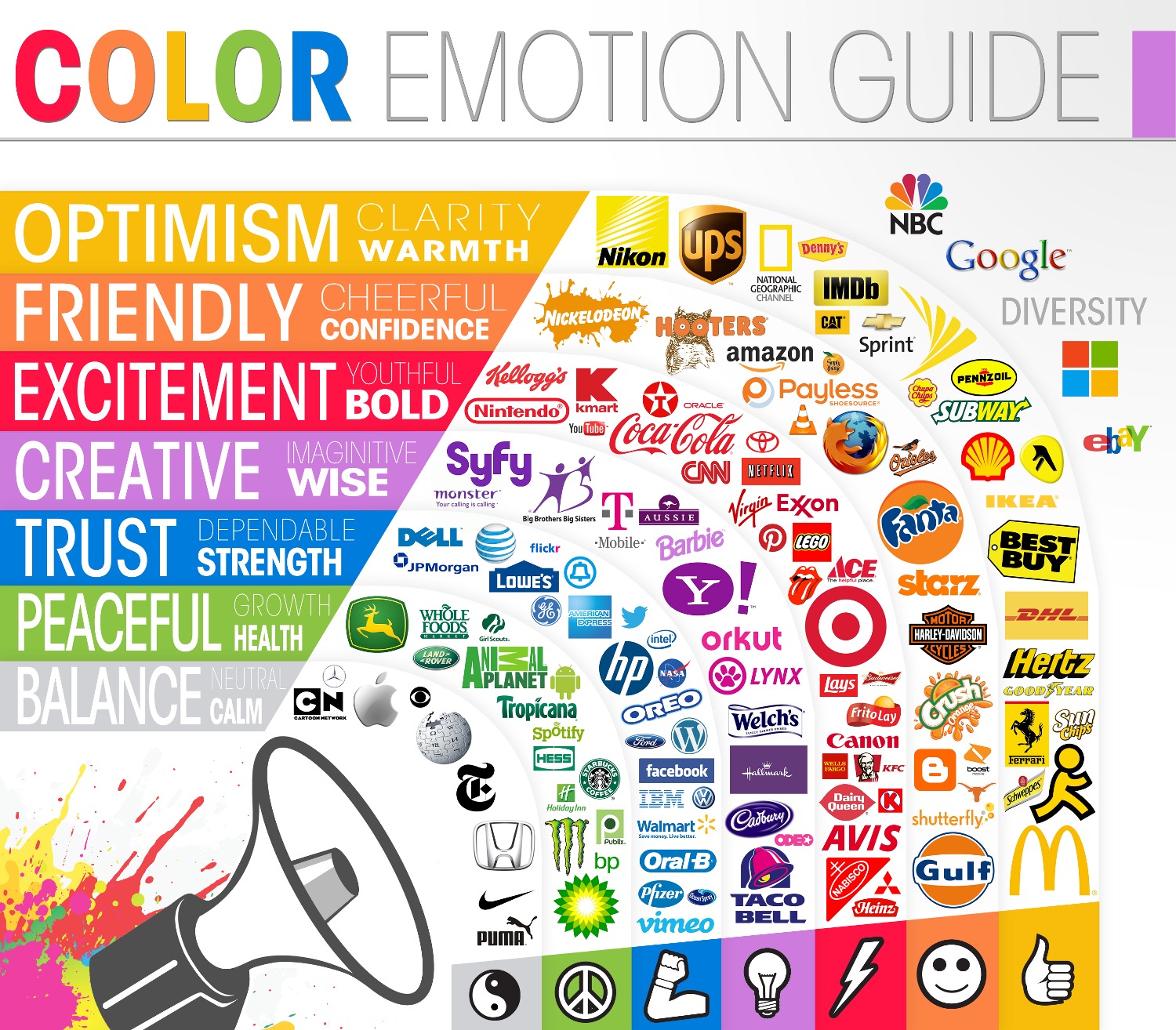
Color is powerful. Research has revealed that people make a decision about a product or service within 90 seconds. Over 62% of that assessment is based on color alone.
However, color is not a magic bullet. Using yellow as your primary color will not automatically make visitors happier. Color, like font, must be combined with other elements to create a cohesive emotional story.
3. Images
On this donation page for Partners in Health, where is your attention directed?

If you’re like most people, the woman’s gaze will direct your attention to the donation form. Now consider the look on her face: concern, resolve, dignity. In the few milliseconds before your focus shifts to the form, you’re already primed to feel empathy.
Also note the use of a high-contrast and reassuring color to direct your attention to the phrase: “Your Donation Will Save Lives.”
Consider how Nike uses awe in their images:
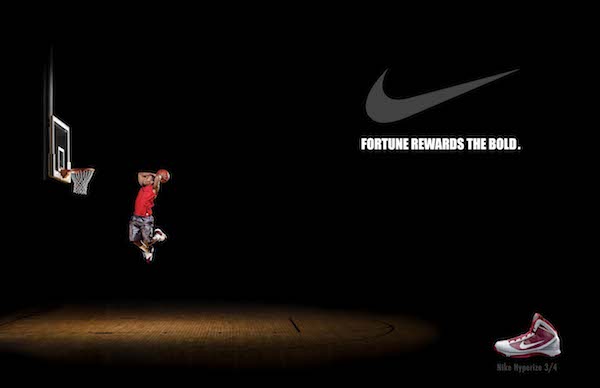
Or how Mothers Against Drunk Driving uses sadness and anxiety:

Or how SilvaStar, which creates forest products, uses anger:

There’s also a psychological theory called emotional contagion. When a personal connection is established, you start to see emotional synchrony.
So, hanging out with people who are regularly sad or quick to anger will influence your sadness and anger levels. Images can make that connection and create synchrony.
Next steps for you:
- Become more aware of your font choices. Select a font that helps encourage the emotion you’re looking to create or maintain. Search through a font library to find the one that’s right for your audience. Revisit the three qualitative research questions above to see how your font change subtly influences emotion.
- Choose the two or three colors that will create or maintain your emotion of choice. Remember that color alone cannot create an emotion; it must be supported by other factors. Use them consistently in your branding. It’s important that these colors become closely associated with your brand.
- Evaluate your current images. What emotions do they evoke? The answer is never “none.” If they’re not creating or maintaining the correct emotion, change them. Be aware of facial expressions, size, color, body language, etc. All of these factors impact the emotion in your images.
Emotional copywriting
Two main factors go into emotional copywriting:
- Triggers words;
- Storytelling.
1. Trigger words
Trigger words are commonly associated with specific emotions. When read, they subconsciously trigger those emotions. This works in a way that’s similar to someone with PTSD recalling an emotionally traumatic event because of an environmental trigger.
For example, what emotions do these two sets of words trigger for you?

For most people, they trigger anger and sadness, respectively.
Brian Clark, founder of Copyblogger, wrote:
The difference between the right word and the almost right word is determined by the level of emotional identification that word prompts. In other words, the right emotional trigger words take the same basic message to all new heights.
Repeatedly using words that typically trigger a certain emotion will, inevitably, trigger that emotion for your visitors.
First, ensure you understand the words your audience is familiar with. Yes, most people associate arrogant, greed, cruelty, hate, and bitter with “angry.” And yes, most people associate despair, unfortunate, sorry, agony, and helpless with “sadness.”
However, there might be certain words that trigger those emotions specifically for your audience (e.g., “malpractice” for doctors).
Some cultures don’t have a word for “worry”; others have 15 words for “fear.” Thus, trigger words are not universal, and the best way to discover them is to:
Perform qualitative research to find your audience’s trigger words. Which words do your happiest customers use? Your most frustrated customers? Which words convey emotions on the sites they frequent?
Be deliberate about your selection. Choose each word with purpose, especially in headlines and calls to action. Examine each word and consider how it makes you feel.
Is there a more emotional word you could use? Every word should tell a cohesive emotional story. Ask a colleague to repeat the process. If you can, ask a customer to repeat the process.
It might take time to go through your landing page, but the experience that the person gets in those three seconds is how they feel towards your product.
Whether it’s, “Okay, I feel safe. This product is going to help me feel safe.” Or, “This product is going to make me feel love.” Or, “This product is going to make me feel more popular.” Or whatever they’re looking for.Those three seconds, when a user lands on your page, can actually change the entire experience a customer goes through. That’s why it’s so important to incorporate emotional triggers in your landing pages.
2. Storytelling
Jennifer Aaker, a marketing professor at Stanford, asked each of her students to give a one-minute pitch. One in 10 students used a story in their pitch. When asked to recall the pitches later, only 5% of students could cite a statistic, but 63% could remember the story—in detail.
Our brains respond well to stories. Consider how many bad movies or books you’ve finished simply because you started them. We’re hardwired to finish stories; we’re already invested and need to know how it ends. In addition, it’s much easier to make an emotional connection to a protagonist than a company (e.g., Richard Branson, Steve Jobs, Elon Musk).
It’s difficult to convince visitors to feel sadness, anxiety, awe, or anger because of a brand. Maybe anger is easy. (Hey, Air Canada and Comcast!) Evoking those emotions through storytelling, on the other hand, is quite easy. (Hey, Disney!)
To Write Love on Her Arms is a self-help organization using emotional storytelling (sadness and anxiety) as a promotional tactic:

Chris Guillebeau uses his story, which often evokes awe, to promote The Art of Non-Conformity:
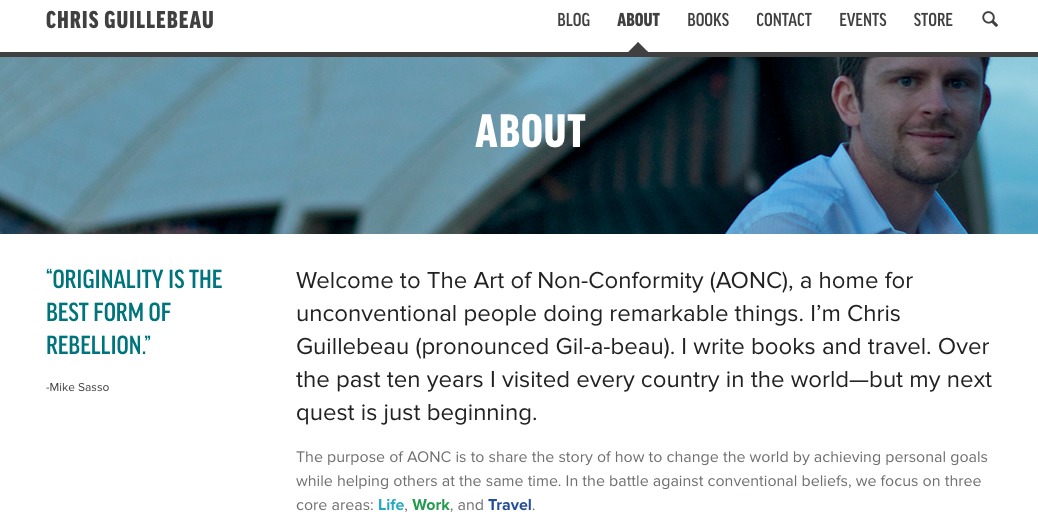
While stats and facts can be valuable, emotions are more persuasive in our irrational minds. Once you make someone feel something through trigger words or storytelling, you can connect with them.
Once you connect with someone, you can more easily persuade them to take the action you want them to.
Next steps for you:
- When possible, make an emotional appeal and present an emotional benefit. “This is why you should feel this way about this issue. Now, take this action to feel another way.”
- Repeat trigger words throughout your copy to inspire and maintain the emotion you’re using. Tap into your audience’s existing vocabulary (through qualitative research) for best results.
- Craft a story with a protagonist and a beginning, a middle, and an end. Facts and figures won’t evoke emotion, but a relatable story will. Your visitors will remember you better and be easier to persuade.
Conclusion
Functional MRI neuro-imagery has shown that, when evaluating brands, you primarily use emotions, not factual information. Studies have also shown that positive emotions toward a brand have greater influence on loyalty than trust, which is based on actual historical data.
You’re an emotional creature with a habit of rationalizing, not a rational creature. Accept it. Become more aware of how your emotions impact your decision-making. In doing so, you can truly understand how to use emotions to persuade visitors and increase your conversions.
While we focused on four pillars (sadness, anxiety, awe, and anger), there are dozens of emotions on the spectrum. As with all elements of CRO, you have to test to see which emotions drive your audience.
To start, try the following:
- Conduct qualitative research to better understand your audience. What’s their emotional range? What are they feeling when they arrive on your site?
- Select a font that helps encourage the emotion you’re looking to create or maintain.
- Choose two or three colors that create or maintain your emotion of choice. Use them consistently in your branding.
- Evaluate your current images. Which emotions do they evoke? The answer is never “none.”
- Be aware of facial expressions, size, color, body language, etc. in your images.
- When possible, make an emotional appeal and present an emotional benefit.
- Repeat trigger words throughout your copy to inspire and maintain the right emotion(s).
- Craft a story with a protagonist and a beginning, a middle, and an end.
Working on something related to this? Post a comment in the CXL community!

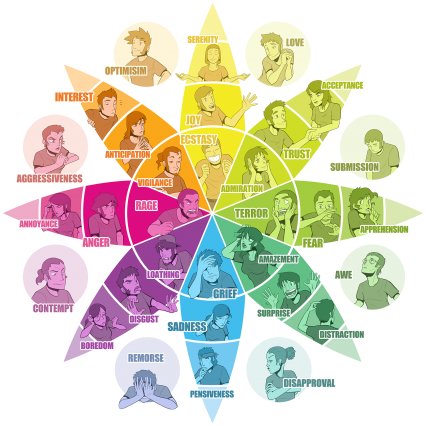
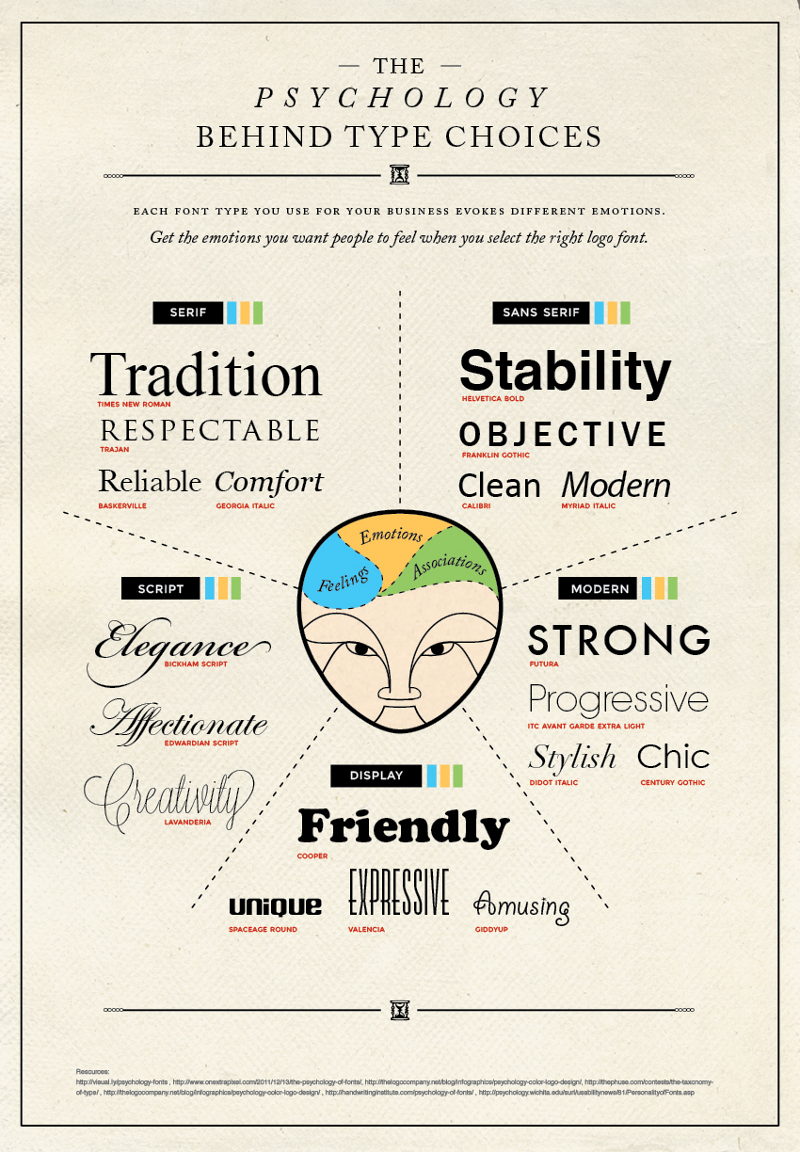




Hi, Shanelle! I’d just like to thank you for the huge and awesome work.
I think it’s awesome that you combined and structured so much information on this topic. Mainly, it’s familiar, but it’s nice to have it at one place.
In fact, I know quite a bit about colors psychology and emotional design but very little about emotional copywriting. So, the article was great to read! It’s especially nice that you’re leaving so many references to other resources; I’ll check ’em out.
Thank you again! Looking forward to new articles!
Thanks for taking the time to read it, Flynn.
There are plenty of emotional design and email copywriting experts who have covered the topics (I’m sure you’ll really like the resources and people referenced throughout). I wanted to bring the two together and suggest, specifically, how the psychology of it all could be applied to CRO.
I hope I helped!
Great article. This information is common sense for some people with strong artistic backgrounds, but for engineers like myself – it is new knowledge.
I am looking for ways to drive more traffic to my site and I came across this article.
Thanks for sharing.
Thanks Al. I’m glad I could help. Let me know if you have any questions about applying these theories to your landing page(s). If you want to learn more about emotional persuasion, follow Talia Wolf, Bart Schutz and Dan Ariely.
Also, we’ve written on it in the past…
https://cxl.com/the-science-of-storytelling-memory-motivation-and-its-impact-on-cro/
https://cxl.com/is-emotion-necessary-to-make-more-sales/
Splendid and exhausted article. Especially loved the examples. Thank you for sharing.
Thanks Veronika!
Another aspect of persuasion / psychology that I’m exploring right now is humor, and how it can be applied to CRO.
In your opening example of $10 vs. $13 for free. The $13 wasn’t free. It costs you to transfer $7 of cash to $7 worth of Amazon Dollars. Also, if you don’t have $7 of cash then the $13 is unavailable to you. Whereas the $10 is available regardless of you having a penny to your name.
Hey Jeremy! Thanks for reading. I pulled the example from Dan Ariely’s book, Predictably Irrational.
It was more of a theoretical exercise. He simply asked a sample (all of them had $7): “Suppose I offer you a choice between a free $10 Amazon gift certificate and a $20 gift certificate for $7.” He found, overwhelmingly, that they chose the $10 gift certificate because our brains prefer immediate gratification.
Hope this helps clarify!
Just what I am looking for! Superb examples on emotional persuation. What’s your take on using positive emotions other as the foundation building startups? Coz most of the time it’s the negative emotions that is commonly used. Will definitely wait for your update on Humor.
Thanks for reading! Glad you found the post helpful.
Many sites use negative emotions to highlight the need for their product or service. The problem makes you feel negative emotions, their solution makes you feel positive emotions.
However, positive emotions are being used as well. Think Coke, McDonalds and Geico.
I really admire Dollar Shave Club and Poopourri for their use of humor. Also, the urine-free wetsuit that sold for £8,999 a few years ago…
http://www.adweek.com/adfreak/probably-best-ad-ever-used-wetsuit-126922
Great topic!
Emotion is sometimes the driving force behind our attitudes and behavior. It plays a major role in how other people influence us and can be the determining factor in attempts to persuade us to change our attitudes and behavior.
In advertising or marketing, it is effective. This approach to selling has been taught in sales-training seminars for decades.
All in all, it’s very informative and useful. The different emotions shared and explained here give further information on how effective it is if used in certain strategies. I couldn’t agree more. Emotional persuasion is a must use line of attack in marketing.
Thanks for reading and taking the time to comment. You’re totally right about sales training!
I’m curious to know whether you’ve used emotional persuasion in marketing before. (If so, how?)
Hey Shanelle,
This was a lot of helpful incite on how we all make decisions based on our emotions. I never thought of the 4 core emotions you mentioned here that makes an impact on our decision. But now that I think about it, They have worked for me. Especially with those ads that make me angry and anxious.
I’ve read a couple of post on color psychology, but I never really implemented them as I should have. I one who believes that no one should put all their eggs in one basket and adding colors to assist in conjuring up specific emotions can be helpful. From what I see it’s more indirect than it is direct like with other factors.
Writing good copy, especially within storytelling, does wonders. I’ve written posts that had these elements in it, and the turn out was pretty strong. Many of the people that come visit my blog were able to relate quite well to the stories I told which is also a great way to keep them longer on my blog.
Thanks for sharing this information here! I hope you’re enjoying the weekend!
You’re absolutely right. Changing one color probably won’t dramatically impact the emotions associated with your site. However, combined with other factors, it can. The important thing is that all of your emotional persuasion factors come together to tell a cohesive story.
Thanks for reading, Sherman!
Hi there,
Cool article! However I am not entirely sure I agree with some of the claims you make about the emotional rationalization of preferences. Especially the part where you talk about brand preferences and you use the Playstation vs Xbox choice. You give forth arguments as to why someone would choose Playstation over Xbox (better games/being able to play online for free). You then state that these are not rational arguments but actually emotional:
“So, while you think you’ve rationally decided that Playstation is better, you haven’t. You’ve emotionally decided that Playstation is better.”
I don’t understand that extrapolation. These seem like highly rational arguments. Can you explain what you mean?
Thanks in advance,
Ali
Hey Ali! Thanks for reading.
It’s an insight pulled from Bart Schutz’s CTA Conference presentation. Better games and being able to play online for free are rational arguments, you’re right. But by the time our brains get to that point, the decision has already been made emotionally.
Our brains subconsciously make emotional decisions and then use logic to rationalize those decisions.
I hope this helps clarify!
Hi Shanelle,
This is an awesome advanced guide! Many practical revelations on Emotional persuasion is made within! For the average internet marketer this is guide comes handy to appeal the emotions of prospects.
Understanding of the emotions of the visitors is fundamental in starting out to persuade them. The 8 tips shared come handy for the proactive marketer is keen on improving conversion.
The details on how colors, fonts, storytelling and headlines can be emotional applied in marketing are revealing. The best part is how the examples shared helped in making the details clearer!
Yes, its important for marketers to leverage on the emotions of visitors because every decision is influenced by emotions!
I left the above comment in kingged.com as well
Thanks Sunday!
Definitely. If you implement any of the concepts above, be sure to let me know how they work out for you.
This is a bombshell of a conversion guide. And still I find the thing that clicks most with me is the tagline: “Our brain is not rational. Our brain is rationalizing.”
Thanks for reading, Aaron! Really appreciate the kind words.
Incredible guide. I want to read it carefully to squeeze as much as possible.
Thanks for these greats articles.
Thanks again, Santi. I also appreciate the tweet. Glad I could help!
Wow…
Now this is one badass post.
I loved this…
“Even the most analytical thinkers are predictably irrational; the really smart ones acknowledge and address their irrationalities.” ~Dan Ariely
The really smart ones do just that.
They practice self-awareness and get to know themselves, what their emotions have to tell them, and how these things condition our minds, and make our decisions for us.
I did give thought into the color scheme in my own blog, and I knew what I wanted to convey to my visitors.
But I had never thought about font. Now I’m curious.
I found your blog through Sherman’s round up post.
He sure knows how to pick them.
Thanks for such an interesting read. I truly enjoyed it.
I’m adding this to my Pinterest board for easy reference.
Thanks Dana! I really appreciate the kind words.
I totally agree with you and I love this: “They practice self-awareness and get to know themselves, what their emotions have to tell them, and how these things condition our minds, and make our decisions for us.”
Let me know how it goes with font testing! I’d love to stay in touch (@shanelle_mullin).
Wow wow wow! Thanks Shanelle. You’ve done an amazing job here.
Wanna definitely know more about what Conversion XL does now :)
Ah, thanks a lot, Jacques! Glad I could help.
You might like these other posts from different authors…
https://cxl.com/the-science-of-storytelling-memory-motivation-and-its-impact-on-cro/
https://cxl.com/is-emotion-necessary-to-make-more-sales/
And, of course, there’s our agency site if you want to learn more about what we do!
http://www.conversionxl.agency
Thank you Shanelle, your article is great. Amazing guide and I will test it and study more my audience! Do you have more advice where to read or learn more the skill of conversions..ebooks, blogs, audio anything could help!
Thank you very much!
Diego
I’m bias, but a genuinely great place to start is our free eBook. It’ll teach you how to master the essentials. Then, head back over here to the blog where we dive deeper into specific topics (copywriting, psychology, a/b testing, etc.)
Here’s the eBook (just enter your email)…
https://cxl.com/
Thanks for reading, Diego!
AWESOME poetry of words.
Educational approach to content mastery. Your subject got break up by pictures. Interesting.
I’m a trader as well as a newbie into Internet marketing. I especially like the 4 emotional triggers which helps explain why we fk things up when we get emotionally involved (trading decision).
1. Which color to use on my logo?
I’m using forex price action trading hack as my domain (seo sake) I’m stuck with a logo but I reckoned a logo would only make it worst as it is a very long word.
So I use the name instead. But what colors should I use? Can I use 3 colors on selected word like price (red) action (blue) hack (yellow)?
Would love to hear your recommendation?
Regards
David
It really depends on what emotion(s) you’re trying to evoke. To me, it seems like establishing trust would be a big factor for you, so blue would be a good choice. Have you read this full color psychology guide…?
http://www.helpscout.net/blog/psychology-of-color/
I think you’ll find it very helpful.